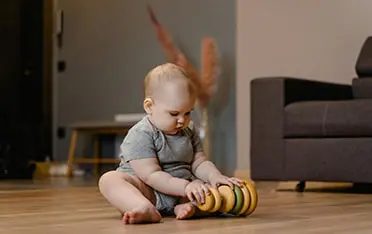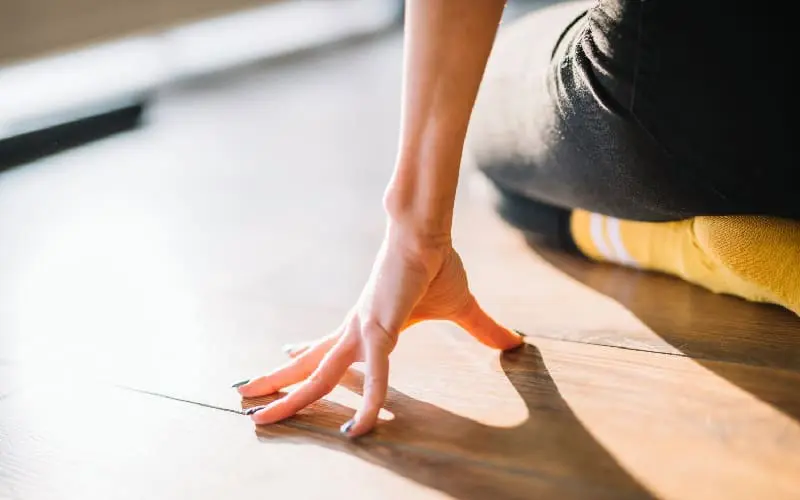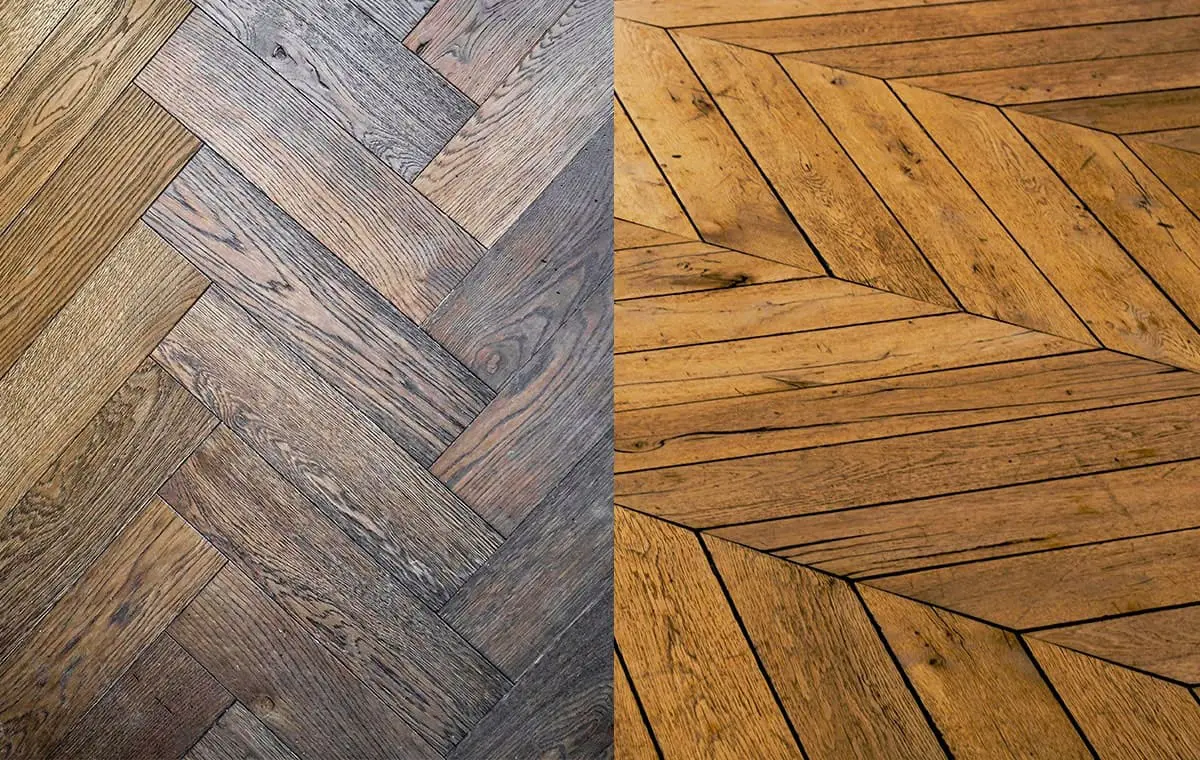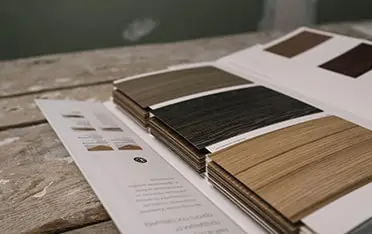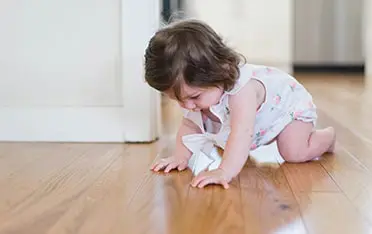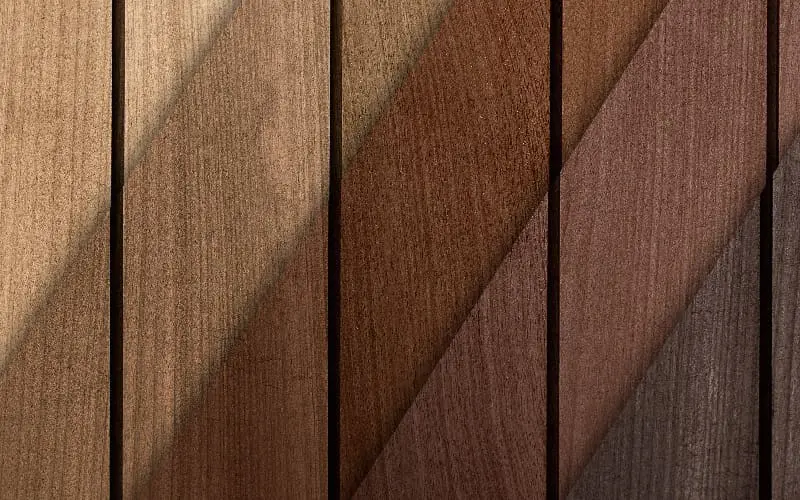Babies can actually spend a lot of time on the floor, crawling, running, walking, sitting, or even falling asleep while playing on the floor. All of this means the flooring you choose plays a more significant role in your child’s room than you might think. Your child’s bedroom flooring needs careful consideration. It’s not just about aesthetics and how the flooring complements the interior design. It’s also about functionality, the child’s comfort and safety.
Let’s examine which flooring options offer the safest and most practical solutions for your growing family.
Tips To Consider When Choosing the Right Floor for a Baby’s Room
Flooring is a baby’s primary environment. From crawling on their stomachs to taking their first tentative steps, their floor is their playground, crash pad, and launching pad. Babies also love to put anything they see on the floor in their mouths and taste it. When choosing the right flooring for your baby’s bedroom, it’s essential to balance comfort, safety, health, durability, and budget.
Warmth and Insulation
Since young children spend a lot of time on the floor, it is essential to choose flooring that is not too cold.
Durability and Budget
The right flooring should have a hard, durable surface coating, withstand daily use, and maintain its beauty and character throughout your child’s growing years. This ensures the long-term value of your investment.
Safety and Maintenance
The flooring you choose for your child’s room should be easy to clean and not attract stains or dirt. When choosing flooring, look for slip-resistant options to handle the occasional accident or spill. On the other hand, Babies are still trying to master their balance, and stumbling and falling is inevitable. A soft surface can decrease the risk of minor injuries.
Another factor you will want to keep in mind is to ensure your baby’s room flooring is antimicrobial, allergen-free, and constructed of a clean, natural material without dangers. Additionally, some flooring (or the adhesives and finishes used) have high levels of volatile organic compounds (VOCs) that could harm your child. According to Greenseal, (VOCs) are common indoor air pollutants frequently found in household products and can cause adverse health effects.
Which Flooring is Best for a Baby’s Room?
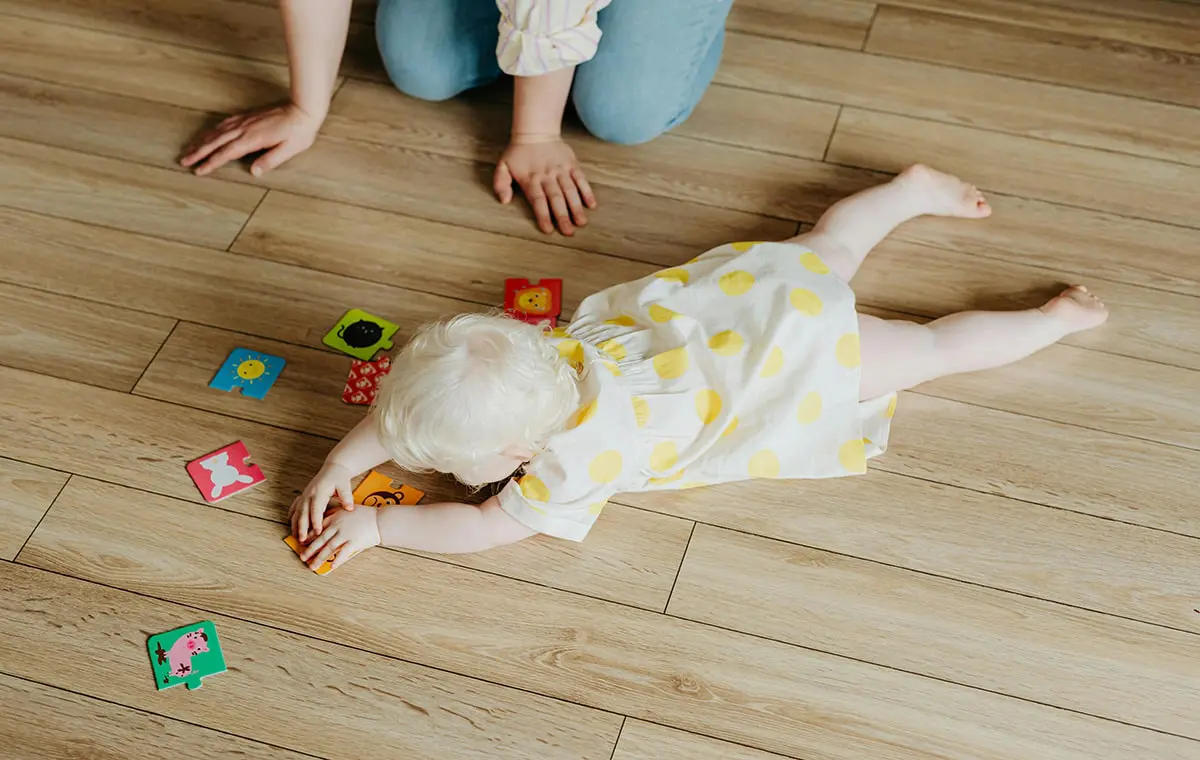
Let’s take a look at the most common types of flooring to see which ones are closest to being kid-friendly.
Solid wood and Engineered wood
Solid Wood flooring is a kid-friendly option–and looks fantastic too. It offers a range of benefits for a child’s bedroom. Solid Wood is a non-toxic flooring material and can be finished with non-toxic sealants, making it a healthier option. If you clean up water stains immediately and don’t let the damage cause cupping and buckling, your Solid Wood will last for years and can be repaired with sanding. There’s no denying the timeless beauty of solid wood flooring, but you should notice that it is a bit hard surface and better suited for a child a little older than a baby’s room.
Compared to hardwood, engineered wood has a bit more of a forgiving underfoot. While it’s not as soft as vinyl or carpet, it offers a balance of comfort and durability. One of the main benefits of engineered wood is its compatibility with underfloor heating. Although it costs more than laminate or vinyl, you will still need a rug to protect it.
Ceramic tile
While tile flooring is great for areas like bathrooms and kitchens because of its strength, durability, and easy-to-clean surface, it may not be the best choice for children’s rooms. Tiles can make a room feel cold, which is unpleasant for young children who often play on the floor. Unless you carpet or rug part of the room.
Carpet Flooring for a Baby’s Room
Carpets may seem attractive for a child’s room at first glance because they create a cosy and warm atmosphere. They also provide a soft, cushioned surface, reduce noise levels, and create a quieter space. However, there are some things to consider before making the final decision. Carpets are difficult to clean. They can collect and retain allergens, bacteria, and dust, aggravating allergy or asthma symptoms. Even with professional cleaning, it is challenging to remove all particles completely.
Vinyl Flooring
Vinyl flooring is a great and affordable option. The soft and comfortable underfoot makes it great for toddlers still learning balance. Choose vinyl flooring made with foam. Its cushioned and flexible surface will prevent your child from getting hit and provide good sound insulation.
Vinyl flooring is easy to install and DIY-friendly, saving you time and money. It only requires occasional cleaning to stay clean, and it’s often compatible with underfloor heating systems if you want to add extra comfort. For a more durable and healthier option, it is better to choose luxury vinyl (LVT) with low VOC and scratch-resistant finishes.
Laminate
Laminate is another great option for your child’s room. It handles stains well and is easy to maintain. You also don’t need to be a professional to install it. One of the drawbacks of laminate is that it can be pretty slippery when wet. It’s best to consider a rug in areas where your baby is most active. Unlike hardwoods, which can be sanded and refinished multiple times throughout their lifespan, if your laminate floor becomes damaged or worn, you must remove and replace the damaged planks.
You should consider that laminate flooring can be noisy. A good quality underlay can reduce some of the noise problems. You can also use Underfloor heating with laminate flooring.
Additional Considerations

As we have seen, some flooring choices make more sense than others. To make a more informed decision, you should be sure of your preferences and priorities, examine different examples, and consider essential points. Here are a few additional important points to remember when choosing a baby’s room flooring.
- Always look for flooring with low or zero VOC certifications. Look for certifications like GreenGuard Gold or FloorScore to ensure your floor is baby-safe.
- Regardless of your chosen flooring, add a non-slip Rug or large cushioned play areas that can be placed over any flooring type to provide a designated safe zone. Rugs can also protect the wood from potential scratches and reduce the risk of slipping.
- Choose comfortable, durable, and easy-to-clean flooring, whether you have a toddler or a teenager.
- As children grow, their tastes in decor change, and they are more likely to seek a stylish, long-lasting look. Hardwood or engineered wood flooring can better adapt to your child’s preferences over time.
- A vacuum with HEPA filtration will help keep allergens at bay, especially if you go for carpet or area rugs.
If you need more help choosing the best flooring for babies, we would be happy to provide design and installation suggestions tailored to your circumstances and budget.
For any flooring queries, drop us an email at info@flooringsurgeons.co.uk – or Visit our showrooms located in Birmingham & Wolverhampton!
Halesowen
214A Dudley Road. Halesowen, Birmingham, B63 3NJ
0121 274 8575
Monday – Friday: 9 AM – 6 PM | Weekends: 10 AM – 4 PM
Wolverhampton
317 Penn Rd, Wolverhampton, West Midlands, WV4 5QF
01902 836666
Monday – Friday: 9 AM – 6 PM | Sat: 10 AM – 4 PM | Sun: Closed
info@flooringsurgeons.co.uk
fitting@flooringsurgeons.co.uk
customerservices@flooringsurgeons.co.uk



